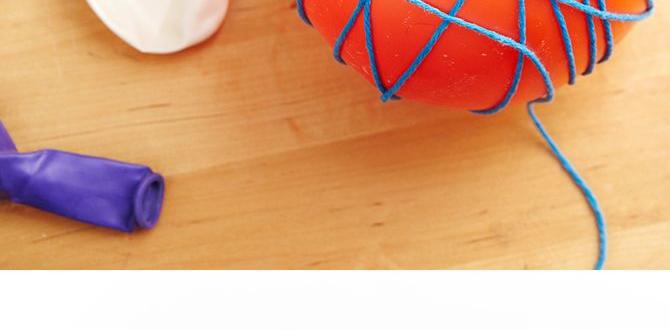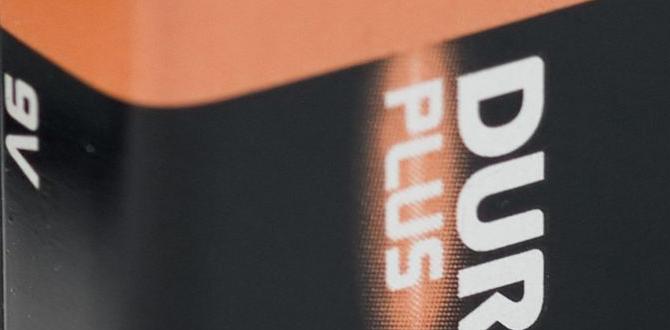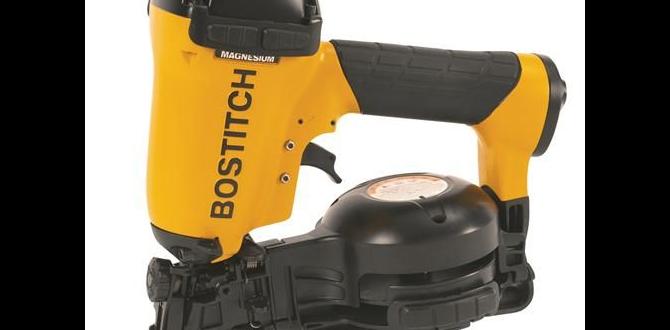Effortlessly test your nail gun’s trigger safety by following these simple, proven steps. Ensure secure operation and prevent accidental firing with clear instructions designed for any DIYer.
Hey there, DIY enthusiasts! Jack Shaffer here, your go-to guy for all things nailers. Today, we’re tackling a topic that’s absolutely crucial for your safety and the success of your projects: understanding and testing trigger safety on your nail gun. You know, that little mechanism that’s supposed to keep the gun from firing unless you really mean it to? Sometimes, it can feel a bit tricky or even a little uncertain if it’s working just right. We’ve all been there, right? A healthy dose of caution goes a long way, especially when you’re dealing with powerful tools. Don’t worry, though! We’re going to break down exactly how to test your trigger safety in a way that’s super clear and easy to follow. You’ll be feeling confident and in control of your tools in no time. Let’s get started and make sure your nailer is as safe as can be before you even pick up that first nail!
Table of Contents
Why Trigger Safety Matters: More Than Just a Feature
Think of your nail gun’s trigger safety system as the final guardian between you and an unexpected nail. It’s not there to be difficult; it’s there to be your backup. Properly functioning trigger safety is paramount to preventing accidental firings. These accidental discharges can happen in a split second, often when you least expect it, leading to injuries to yourself or others nearby. It’s about respecting the power of the tool and ensuring it only does what you instruct it to do, when you instruct it to do so.
Modern nail guns typically employ a combination of safety features, with the trigger and the contact tip (the part that touches the wood) being key players. The most common system is the “contact trip” or “sequential trip” mechanism. This means that for a nail to fire, two things usually need to happen simultaneously: the safety lever on the contact tip must be depressed against a surface, and the trigger must be pulled. Some nailers offer selectable modes, allowing for sequential or rapid fire, but the core principle of requiring an action at both the tip and trigger remains a fundamental safety design in most professional-grade tools.
Understanding this basic operation is the first step. The next, and arguably more important, is verifying that it works every single time. This isn’t a set-it-and-forget-it feature. Regular testing ensures that wear and tear, or perhaps a bit of dust or debris, hasn’t compromised its effectiveness. This proactive approach is what separates a safe workshop from one where accidents are more likely to occur. We’ll guide you through how to do this easily and effectively.
Understanding Your Nailer’s Trigger System
Before we get to testing, let’s quickly chat about the two main types of trigger mechanisms you’ll find on most nail guns. Knowing which one you have will help you understand the tests better.
Contact Trip (Sequential Trip)
This is the most common and generally considered the safest trigger mechanism for DIYers and general use. Here’s how it works:
- Two-Step Firing: To fire a nail, you must first press the nose of the nailer (the contact tip) firmly against the material you’re working on. This depresses a spring-loaded safety lever on the tip.
- Trigger Pull: Only after the safety lever is depressed can you pull the trigger to fire a nail.
This system is fantastic because it significantly reduces the chance of accidental firing. You can’t accidentally shoot a nail if the gun isn’t pressed against something. It’s ideal for precise nailing, like when you’re installing trim or assembling cabinets where you place the nail exactly where you want it before firing.
Nailer Actuation Modes
Many modern nailers, especially framing and finishing nailers, offer selectable actuation modes. This is often controlled by a switch or button near the trigger. The two primary modes are:
- Sequential Actuation: This is the default “safety first” mode we just discussed. Press the tip, then pull the trigger. One nail fires per trigger pull and tip depression.
- Contact Actuation (Bump Fire): In this mode, you can fire nails rapidly by continuing to hold the trigger down and repeatedly bumping the contact tip against your workpiece. This is much faster for tasks where speed is key, like framing a wall. But it requires extra caution because a nail can fire any time the tip is depressed while the trigger is held.
Important Note: Even in “Contact Actuation” mode, the contact tip must still be depressed for a nail to fire. The difference is that if you hold the trigger down, any subsequent bump of the tip will cause a nail to fire. This is why understanding and testing your trigger’s behavior in all modes is so critical.
Essential Tools and Preparations for Testing
Before you can test your nailer’s trigger safety, you need to be prepared. Don’t worry, it’s not complicated, and you likely have most of what you need already. The key is to set up a safe testing environment and have the right mindset.
What You’ll Need:
- Your Nail Gun: Of course! This could be an electric, cordless, or pneumatic (air-powered) model.
- Power Source: This means your charged battery, an air hose connected to a compressor (ensure the compressor is turned off for initial checks), or plug for an electric model.
- Safety Glasses: This is non-negotiable. Always wear them!
- A Safe Testing Surface: This needs to be something sturdy and disposable that can accept a nail without damage to your surroundings. Good options include:
- A thick piece of scrap lumber (like a 2×4 or 2×6).
- A thick piece of plywood.
- Even a securely placed piece of thick cardboard can work for a quick trigger check, though wood is better for testing the full mechanism.
- Gloves (Optional but Recommended): For a better grip and a bit of extra protection.
- Your Nailer’s Manual: If you still have it, it’s a great resource for model-specific information.
Preparing Your Workspace for Safe Testing
Safety is always the top priority at Nailerguy! So, before we even think about pulling a trigger, let’s set up a secure testing zone. This seems obvious, but a little extra care ensures no surprises.
- Clear the Area: Make sure there are no people or pets anywhere near where you’ll be testing. Ideally, do this in a garage, workshop, or outdoor space where stray nails won’t cause damage or injury.
- Secure Your Test Material: Place your scrap wood or plywood on a stable surface. You don’t want it wobbling around while you’re testing. Clamp it down if necessary.
- Ensure Your Nailer is Empty: Crucially, remove all nails from the magazine before you begin. This is the single most important step to prevent accidental firing during the test itself. Double-check this, then check again!
- Manage Your Power:
- For Pneumatic Nailers: Keep the air compressor turned OFF and disconnected from the nailer for the initial dry firings. You can connect the air after you’ve tested the trigger function without pressure.
- For Electric/Cordless Nailers: Ensure the battery is installed but be mindful of its charge level.
Now that you’re prepped and your space is safe, you’re ready to move on to the actual testing steps. Remember, our goal is to confirm that the trigger only fires when you intend it to.
How To Test Trigger Safety: Step-by-Step Guide
Alright, let’s get down to business! We’re going to run through a series of checks to make sure your nailer’s trigger and safety mechanism are working perfectly. We’ll cover both sequential and contact actuation modes, as well as some general safety comportment.
Step 1: Ensure Nailer Magazine is Empty (Repeat!)
I know I’ve said it before, but I can’t stress this enough: ENSURE ALL NAILS ARE REMOVED FROM THE MAGAZINE. Seriously, power off your tool, remove the battery or disconnect the air, remove the magazine, and visually confirm it’s empty. Then, put the empty magazine back in and reconnect power. This test is about the mechanism, not about firing a nail.
Step 2: Test Trigger Without Tip Depression (Sequential Mode)
This is the most critical test for preventing accidental discharge. Most nailers are set to sequential mode by default, or have a selectable sequential mode.
- Power On: Ensure your nailer has its power source connected (battery installed, or air hose connected and compressor ON if testing with air).
- Hold the Nailer: Grip the nailer firmly.
- Pull the Trigger: Without pressing the contact tip against anything, try to pull the trigger.
Expected Result: Nothing should happen. No click, no firing action, and definitely no nail should be driven.
If it fires: STOP IMMEDIATELY. This is a major safety issue. Consult your tool’s manual or contact the manufacturer for support. Do not use the tool until it’s fixed or diagnosed by a professional.
Step 3: Test Trigger WITH Tip Depression (Sequential Mode)
This test confirms the two-step firing sequence is working.
- Power On: Ensure your nailer has its power source connected and is ready (air compressor ON if applicable).
- Place on Test Surface: Position the contact tip firmly against your scrap material. You should feel it depress slightly.
- Pull the Trigger: While keeping the tip pressed, pull the trigger.
Expected Result: A single nail should be driven into your test material. You might hear a distinct “bang” or “thwack.”
If it doesn’t fire: Check that the tip is depressed firmly enough. If it still doesn’t fire, ensure your air pressure is adequate (around 90-120 PSI for most pneumatic nailers, check your manual) or your battery is charged. If all those are good and it still fails, there might be an internal issue. Consult your manual or manufacturer.
Step 4: Test Trigger Without Tip Depression (Contact/Bump Fire Mode – If Applicable)
If your nailer has a selectable contact (bump fire) mode, it’s essential to test this separately. Remember, this mode is for speed, but requires more user awareness.
- Switch to Contact Mode: If your tool has a mode selector, switch it to the “Contact” or “Rapid Fire” setting according to your manual.
- Power On: Ensure power is connected and ready.
- Hold the Nailer: Grip the nailer firmly.
- Pull and HOLD the Trigger: This is the key difference. Keep the trigger pulled down.
- Do NOT Press the Tip: Just hold the trigger.
Expected Result: Absolutely nothing should happen. The nailer should remain inert, even with the trigger held down, as long as the contact tip is not depressed.
If it fires: STOP IMMEDIATELY. This is a serious safety hazard in contact mode. It means the trigger is engaging the firing mechanism without the safety tip being pushed. This must be addressed by a professional. Do NOT use the tool.
Step 5: Test Trigger WITH Tip Depression (Contact/Bump Fire Mode – If Applicable)
Now, let’s see if the bump fire mode actually bumps!
- Switch to Contact Mode (if you haven’t already).
- Power On.
- Pull and HOLD the Trigger: Keep it held down.
- Press the Contact Tip: Firmly press the contact tip against your scrap material.
Expected Result: A nail should fire. Now, while still holding the trigger down, lift the tip slightly, then press it again. Another nail should fire.
If the first nail doesn’t fire: Ensure the tip is depressed firmly enough. Check air pressure or battery charge. If it still fails, there may be an issue with the mode selector or firing pin.
If subsequent bumps don’t fire while holding the trigger: Similar to the sequential mode, check basics like air/battery. If the problem persists, professional assessment is needed. The safety system is failing to allow sequential firing even in this mode.
Step 6: Test Trigger Firing in Different Positions
Nail guns can be used at odd angles for DIY projects. It’s wise to do a quick test firing at various orientations to ensure the mechanism isn’t affected by gravity or position.
- Ensure Sequential Mode is Selected (Safest for this test).
- Power On.
- Hold the nailer in different orientations: upside down, sideways, at a 45-degree angle.
- Press the contact tip firmly against your test material in each position.
- Pull the trigger.
Expected Result: A nail should fire in each position where the tip is depressed and the trigger is pulled.
If it fails in certain positions: This could indicate debris inside the tool or a worn component. It’s worth investigating further, possibly with a professional, as it suggests inconsistent operation.
Step 7: Final Safety Check and Power Down
Once you’ve completed your tests and confirmed everything is working as expected:
- Always disconnect the power source: Remove batteries, disconnect air hoses, or unplug electric tools.
- Visually inspect the nailer: Look for any obvious damage, loose parts, or excessive debris.
- Store your nailer properly: In its case, in a dry place, away from children.
Performing these tests regularly, perhaps before starting a big project or at the beginning of each season you use your tools, will give you peace of mind and help prevent accidents.
Understanding Nailer Trigger Safety Standards
It’s good to know that there are established guidelines and standards for tool safety, including nail guns. While you might not be designing nailers, understanding these principles can reinforce why certain features are present and why testing them is vital.
In the United States, the Occupational Safety and Health Administration (OSHA) sets workplace safety standards. For nail guns, OSHA regulations emphasize training, maintenance, and the use of appropriate safety equipment. For instance, OSHA’s 29 CFR 1926.302(b) covers requirements for pneumatic power tools, including nailers. It mandates that such tools must be equipped with a safety trigger that prevents the tool from firing unless compressed against a work surface.
Internationally, similar standards exist. For example, the European Committee for Standardization (CEN) develops harmonized standards that product manufacturers can comply with to demonstrate conformity with essential health and safety requirements. For nail guns, standards like EN 792-13 often cover safety requirements for assembly tools. These standards typically define the essential safety requirements, including those related to actuation mechanisms to prevent unintentional firing.
The core principle embedded in these standards is the “two-stage” or “contact actuation” requirement. This means that the tool should not fire unless both the contact mechanism (tip) and the trigger are activated. This is precisely what we’re testing in our steps above. Knowing these standards exist helps us appreciate the engineering behind nailer safety and why diligently testing these features is a responsible practice for any user.
Troubleshooting Common Trigger Safety Issues
Even with diligent testing, you might encounter a hiccup. Don’t panic! Many common trigger issues are fixable or at least diagnosable with a little know-how. Here are a few scenarios:
Issue: Nailer Fires Without Trigger Pull (Accidental Discharge)
- Scenario: You bump the contact tip, and it fires a nail – without you pulling the trigger.
- Likely Cause: This is the most dangerous failure. It often means the trigger mechanism is stuck “on,” or there’s a critical internal failure. For pneumatic tools, debris might be jammed in the valve system.
- Action: STOP IMMEDIATELY. Disconnect power. Do NOT use the tool. Consult your manual or a qualified repair technician. This is a serious hazard.




